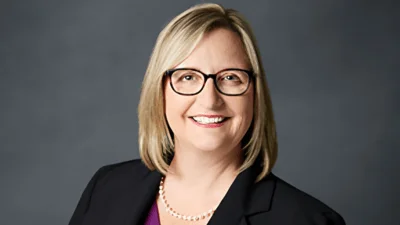At the height of the COVID-19 pandemic, OSF Innovation and OSF OnCall Digital Health rapidly set up a virtual program to treat sick people at home while also reducing stress on hospital capacity and medical providers. The idea grew out of a Trailblazer Challenge, a competition that helps Mission Partners bring their ideas to life.
In just three months, OSF HealthCare was among a few health systems in the country successfully leveraging technology to care for more than 100 patients at their own homes across Illinois. As a result, OSF became one of three health care systems in the state granted a waiver to provide hospital-level, inpatient care at peoples’ homes. The next step was to determine what this concept would look like for the Ministry.
“We needed to pause what we were doing and really think about how to design and build a program that ensures patients are offered every single aspect of care they would receive in our hospitals,” said Stephanie Law, a strategic program manager for Performance Improvement, a part of OSF Innovation. “There were so many questions we needed to answer, like how do we determine who can be cared for at home? Who is going to set up equipment? How do we obtain medical tests throughout treatment?”
In partnership with Medically Home, a consultant that specializes in delivering hospital care to patients’ homes, OSF OnCall Digital Health, OSF Innovation and Jump Simulation worked together to not just create an end-to-end process for the new model of care, but to run a variety of simulations to test workflows, identify real-time problems and make fixes to ensure a flawless launch.
Simulating a digital hospital
Medically Home helped OSF lay out a plan to develop, simulate and implement the OSF OnCall Digital Hospital. However, the team wanted to take testing to the next level by using the advanced facilities available at the Jump Trading Simulation & Education Center.
“Simulation provides a safe realistic space to make mistakes and test new processes without involving real patients,” said Melissa Meier, a manager of Digital Care for OSF OnCall Digital Health. “With access to any clinical space you can think of, standardized participants who can act in a variety of roles and education experts, we knew Jump could help us see the hospital at home concept at work.”
Medically Home, Performance Improvement and OSF OnCall were responsible for designing the care model. That meant talking with every department that touches the inpatient process, mapping out those workflows and then re-developing them for care at home.
“You can’t imagine everything that goes into inpatient care,” said Law. “We had to think about everything from drawing blood and transporting patients to providing in-home visits and delivering meals.”
Jump created the in-seat education and simulation-based training to help clinicians prepare for the new model of care. They used every space within Jump, the emergency department at OSF HealthCare Saint Francis Medical Center and the homes of standardized participants to simulate every part of the OSF OnCall Digital Hospital care model.
“Our standardized participants were given scripts to work with, but we really wanted them to think as though they were real patients, ask real questions and let us know when there was something they didn’t understand,” said Nikki Delinski, director of Educational Operations for Jump. “We told our actors to push it until they break it, so we could quickly identify issues and solve for those before delivering this type of care to the people we serve.”
The standardized participants did just that. Some discoveries included realizing cameras automatically turn on in someone’s home when a clinician calls them, determining that each person may want to choose where their monitoring equipment is set up, being cognizant of when nurses show up for checkups and understanding when labs could be drawn.
“Through simulation, we were able to find multiple steps in our workflows that needed to be adjusted, omitted or added to make them as efficient as possible,” said Meier. “At the same time, my Mission Partners were able to gain confidence through repetition of the new workflows and skills and get comfortable providing care in the home prior to launching the program. Without our simulation resources at Jump, that would have been nearly impossible to do in such a realistic and detailed way.”
Taking advantage of simulation for testing
Following five weeks of testing and training, the OSF OnCall Digital Hospital successfully launched in August. Discussions are now underway for how to use simulation and standardized participants to test new technologies, procedures and processes in the future.
“We’re starting to use our standardized participants beyond just being actors,” said Delinski. “With different backgrounds and experiences, they can help us determine how someone might interact with a new experience OSF is hoping to deliver. It’s an amazing opportunity to ensure these innovative approaches to care are going to work for the people we serve.”
Original source can be found here.





 Alerts Sign-up
Alerts Sign-up